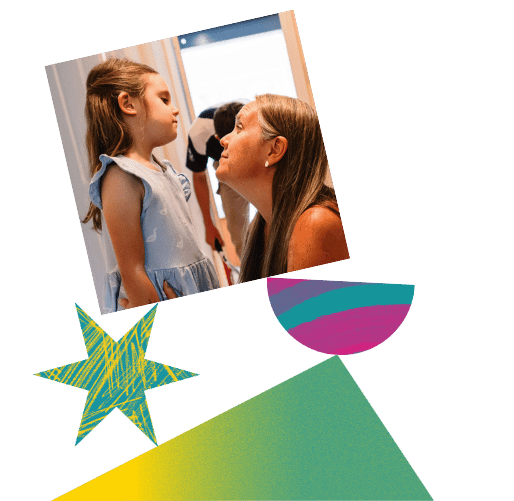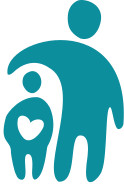Course modules
1. Welcome and introduction
1.1 Welcome to this course
1.2 About this course
1.3 Moving through the course
1.4 A biological system
1.5 The aim of this course
1.6 Why think about attachment?
1.7 The Solihull Approach model: A reminder
1.8 References
2. Introduction to attachment
2.1 Konrad Lorenz
2.2 Harry Harlow
2.3 John Bowlby
2.4 Attachment is a technical term
2.5 What is ‘attachment’?
3. Some Key Concepts
3.1 Attachment behaviours
3.2 Primary Attachment figure
3.3 Bonding and attachment
3.4 Secure base and safe haven
3.5 More about a secure base and a safe haven
3.6 Threat
4. The phases and timing of attachment development
4.1 Babies are born to attach!
4.2 The first phase of attachment
4.3 The second phase of attachment
4.4 The third phase of attachment
4.5 The fourth phase of attachment
4.6 Recap of key concepts
4.7 Implications of the key concepts
5. The quality of an attachment
5.1 A redefinition
5.2 The Strange Situation
5.3 Why this research was important
5.4 Types of attachment: Secure
5.5 Insecure: Anxious Ambivalent or Resistant
5.6 Insecure: Anxious Avoidant
5.7 Disorganised attachment
5.8 Coping with a Still Face
5.9 Children in the care system
5.10 ‘Attachment’: A field filled with confusion
5.11 Fright without solution
5.12 Which mirror?
5.13 A Trauma Bond
6. Internal Working Model, attachment, adulthood and society
6.1 The Internal Working Model
6.2 How Internal Working Models develop
6.3 Behaviours within a category of attachment
6.4 Behaviour and attachment category
6.5 Children to adults
6.6 Theory to practice
6.7 Attachment and society
6.8 Summary so far
7. Developments in attachment theory
7.1 Developments in attachment theory
7.2 Not quite as clear cut
7.3 The Dynamic-Maturational Model
7.4 More about the Dynamic-Maturational Model
7.5 Dynamic Maturational Model: patterns change
7.6 Transgenerational transmission of attachment patterns
7.7 Change and evolution
7.8 Attachment and cognitive development
7.9 Summary
8. Attachment and the Solihull Approach
8.1 How do containment and reciprocity relate to attachment?
8.2 Containment
8.3 How containment helps with threat
8.4 Containment and secure attachment
8.5 Containment and Avoidant and Resistant attachment
8.6 Containment and Disorganised attachment
8.7 Containment: theory into practice
8.8 Reciprocity and attachment
8.9 Reciprocity and disorganised attachment
8.10 Rupture and repair is important
8.11 Reciprocity, attachment and postnatal depression
8.12 Secure attachment needs reciprocity
8.13 Singing and music promote attachment
8.14 Containment, reciprocity and the attachment
9. Introduction to epigenetics
9.1 Why are we looking at epigenetics?
9.2 Introduction to epigenetics
9.3 Epigenetics, nature and nurture
9.4 Heritability of epigenetic changes
9.5 Epigenetics and attachment
9.6 Epigenetics: rats and attachment
9.7 The mechanism
9.8 Epigenetics: children and attachment
9.9 Epigenetic changes in trauma
9.10 Heritability of the effects of trauma
9.11 Attachment, trauma and epigenetics
9.12 Children, dandelions and orchids
9.13 Evidence for dandelions and orchids
9.14 Reflecting on epigenetics
10. Summary and conclusion
10.1 Review
10.2 Congratulations!
10.3 Feedback questionnaire
10.4 Certificate and acknowledgements
About this course
This advanced, certified online course introduces research in attachment to provide a deeper understanding of attachment and development for practitioners working with children, families, adults or older adults. Preferably studied following the 2 Day Foundation training, this concise CPD is relevant for all practitioners across sectors and equips you to effectively recognise and understand attachment styles and its significance in relationships.
Rooted in psychological expertise and practical experience, the course content is designed to support professionals in all interactions through greater awareness of attachment and informed strategies.
Attachment and the Solihull Approach model
Designed to help move theory into practice, Understanding attachment will further increase your understanding of the Solihull Approach model behind Togetherness and its applications, as well as using the concepts to think about attachment in different ways.
Certificates and advanced trained practitioner recognition
Certificates are provided upon completion of the course for both face-to-face learners and online learners.
Advanced Trained Practitioner certificates are awarded to those who have completed three advanced level courses following the 2 Day Foundation training. To receive your advanced trained practitioner certificate, please contact the Togetherness team providing copies of your qualifying training certificates


